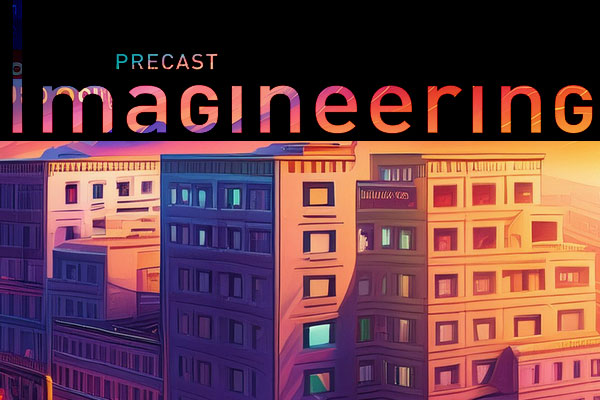The Gardiner Expressway, in operation for over six decades, has been significantly affected by weather exposure, road salt, and growing traffic demands bringing it close to the end of its intended design lifespan. To keep the roadway safe and in good working condition, Toronto City Council approved a Strategic Rehabilitation Plan in December 2016, which outlines six major projects. Construction of Section 1 was completed in 2021.

Section 2 of this rehabilitation included replacing a 6-lane wide, 700m long portion of the elevated highway between Dufferin St. and Strachan Ave. This work consisted of replacing the concrete deck and girders, rehabilitating the associated substructure, and installing new street lighting.
Precast concrete box girders were specified in the design for their advantages in quality control, rapid erection, and minimal on-site forming for the bridge deck. With a limited working window during overnight lane closures and strict scheduling constraints, precast offered the best solution for minimizing impact to the traveling public and accelerating the project timeline.
A key challenge was the narrow nighttime construction window, constrained by the need for full lane closures on one of Toronto’s busiest highways. To address this, girder delivery and erection were coordinated with exceptional efficiency: 6 to 7 girders were installed per night, averaging 15 minutes per piece. Constant coordination between precast production, transportation, and site crews was critical to maintain this pace.

Another challenge was the City of Toronto’s requirement to accelerate the overall project timeline from 3 years to 2 years, to ensure completion ahead of the 2026 FIFA World Cup, which will be hosted at BMO field located right in front of the project site. The use of precast girders enabled offsite fabrication in parallel with onsite substructure rehabilitation, significantly compressing the construction schedule.
Early in the project, the construction team, designer, and precaster collaborated to optimize the precast design. This integrated approach allowed for simplified detailing and streamlined production. As a result, the precast plant was able to produce multiple girders per day at a consistent pace, maintaining a steady flow of girders to site and staying ahead of the construction schedule. This alignment between teams was critical to meeting the City’s aggressive timeline.
The scope of supply included the fabrication and delivery of 705 precast, prestressed B700 box girders. This total comprised:
- 690 standard girders with a cross section of B700 × 1220 mm
- 6 girders with a narrower B700 × 915 mm cross section
- 9 custom tapered girders transitioning from 1220 mm to 915 mm in width.
Girder lengths ranged from 18.088 metres to 21.136 metres, with corresponding weights between 22.23 tonnes and 25.65 tonnes, respectively.

Construction of this project has progressed along the following approximate accelerated timeline (as of writing on April 17, 2025):
Stage 1 (Southernmost 2 lanes)
- Start of girder fabrication at precast plant; March 2024
- Start of existing structure demolition onsite; May 2024
- Delivery and Installation; July to September 2024
- Open to active traffic; December 2024
Stage 2 (Middle 2 lanes)
- Start of girder fabrication at precast plant; August 2024
- Start of existing structure demolition onsite; November 2024
- Delivery and Installation; January to March 2025
- Open to active traffic; Anticipated May 2025
Stage 3 (Northernmost 2 lanes)
- Start of girder fabrication at precast plant; February 2025
- Start of existing structure demolition onsite; Anticipated May 2025
- Delivery and Installation; Anticipated July to September 2025
- Open to active traffic; Anticipated December 2025

- OwnerCity of Toronto
- Precast SupplierDecast Ltd
- EngineerStantec (Formerly Morrison Hershfield)
- ContractorGrascan Construction
- General ContractorPlatfifab
- General ContractorDayton Superior

Imagineering Magazine
View our latest issue of the popular Imagineering Magazine.
